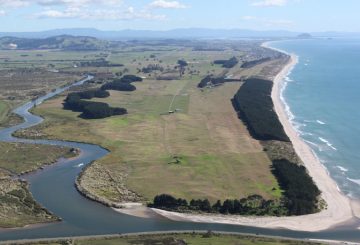Gumawa ng hakbang ang New Zealand patungo sa paggamit ng mga digital na kredensyal para sa mga online na serbisyo sa pagpapakilala ng Trust Framework Authority. Magpapasya ang katawan na ito kung aling mga organisasyon ang maaaring magbigay ng mga serbisyo sa digital na Nilalayon ng digital ID scheme na gawing simple ang mga proseso tulad ng pagbubukas ng isang bank account o pag-access sa mga serbisyo ng pamahalaan sa pamamagitan ng pagpapalit ng mga pisikal na dokumento
Maaari itong magkaroon ng isang makabuluhang epekto sa digital na ekonomiya ng New Zealand. Ipinahayag na ng Ministro para sa Digitising Government, si Judith Collins, ang kanyang pagnanais na dagdagan ang paggamit ng AI ng gobyerno sa mga sektor tulad ng kalusugan at edukasyon. Gayunpaman, ang mga pag-unlad na ito ay kailangang maingat na isaalang-alang sa mas malawak na konteksto ng mga prinsipyong namamahala sa ating digital na ekonomiya.
Bagama’t mahalaga ang mga digital ID para sa pag-access at pagtitiwala sa mga digital na serbisyo, kailangan silang pamahalaan at protektahan alinsunod sa aming mga halaga. Kabilang dito ang pagsasaalang-alang sa personal, komunidad, at pambansang pananaw. Ang pag-unlad ng mga bagong digital na serbisyo at kung sino ang bumubuo ng mga ito ay kailangan ding isaalang-alang bilang bahagi ng mas malawak na digital na ekonomiya.
Ang isang kamakailang ulat ng mga mananaliksik mula sa proyekto ng Veracity Technology Spearhead at ng domestic cloud provider na Catalyst Cloud ay nagpapakita kung paano malapit na nauugnay ang digital ID sa pamamahala ng data at daloy ng impormasyon. Iminumungkahi ng ulat na kailangan nating ayusin kung paano tayo bumubuo ng mga digital system patungo sa isang desentralisadong modelo na naghihihiwalay sa pamamahala ng data mula Ayon sa isang kamakailang ulat ng OECD, ang naturang pagsasaayos ay kagyat na kailangan upang matiyak na ligtas ang mga mamamayan at negosyo at may mga pagpipilian sa isang digital na mundo.
Maraming mga bansa ang kinikilala ang kahalagahan ng pagkakaroon ng kanilang sariling pambansang imprastraktura Halimbawa, ang sistema ng X-Road ng Estonia, na inilunsad noong 2001, ay ang pundasyon ng mga serbisyong e-gobyerno ng bansa, na nagpapahintulot sa ligtas na pagpapalitan ng data sa pagitan ng mga database ng pampubliko at pribadong sektor. Ang imprastraktura na ito ay nagbibigay-daan sa Estonia na maging pinuno sa mga serbisyo ng digital na pamahalaan, mula sa online na pagboto hanggang sa mga digital
Gayunpaman, maraming mga lokal na negosyo ang nakakatagpo sa isang mahirap na posisyon. Umaasa sila sa mga serbisyong ibinigay ng malalaking kumpanya ng teknolohiya para sa kanilang mga digital na operasyon, na hindi sinasadyang nagbibigay ng data sa proseso. Ang mga maliliit na retail, halimbawa, ay maaaring gumamit ng mga platform ng e-commerce na nangongolekta at nag-aaral ng data ng customer. Habang ang mga platform na ito ay nagbibigay ng mahalagang serbisyo, naglalabas din sila ng mga pananaw na maaaring magamit upang makipagkumpetensya sa mga negosyong pinagliling
Malinaw ang hamon para sa mga lokal na negosyo. Kailangan nila ng mga digital tool upang manatiling mapagkumpitensya, ngunit ang paggamit ng mga tool na ito ay madalas na nangangahulugang pagsuko ng kontrol sa data na kinokolekta Ang mga data na ito, naman, ay nagpapasigla sa paglago at pangingibabaw ng mga malalaking kumpanya ng teknolohiya, na lumilikha ng isang siklo na mahirap masira.
Ang landas sa paglikha ng pantay na pambansang imprastraktura ng data ay kumplikado at mangangailangan ng pakikipagtulungan sa pagitan ng mga pamahalaan, negosyo, at lipun Gayunpaman, ang mga potensyal na benepisyo – nadagdagan ang pagbabago, patas na kumpetisyon, at demokratikong pag-access sa digital na ekonomiya – ginagawa itong isang paglalakbay na nagkakahalaga ng gawin.




























































